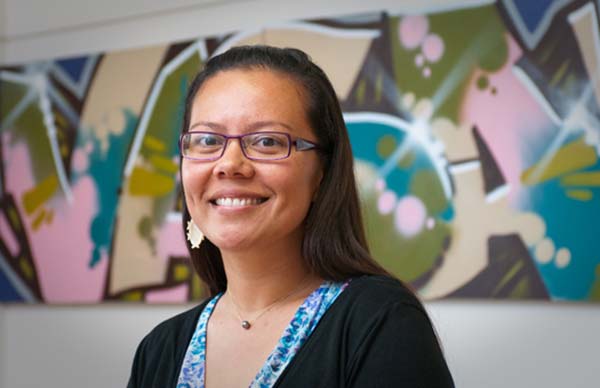Eye on the Indies:
A Look at Indie Authors and Their Publishers
By Lanie Tankard, Indie Book Review Editor
Indigenous Literatures from Micronesia, edited by Evelyn Flores and Emelihter Kihleng (Honolulu: University of Hawai’i Press, 2019. 384 pages; $90.00 hardback, ISBN 9780824875411; $30.00 paperback, ISBN 9780824877460). New Oceania Literary Series editor: Craig Santos Perez
“Even though you and I are in different boats,
you in your boat and we in our canoe,
we share the same River of Life.
What befalls me, befalls you.”
—Chief Oren Lyons, Onandaga Nation
Address to the United Nations (December 10, 1992)
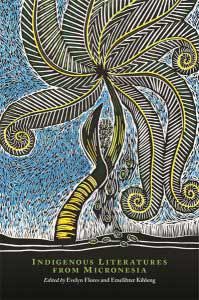
Cover art by Monica Dolores Baza
Indigenous Literatures from Micronesia is a potent lyrical lamentation from over two thousand islands in the vast Northern Pacific. In this inaugural volume of the New Oceania Literary Series from the University of Hawai’i Press, islanders address centuries of still-festering wounds inflicted on their atolls by the world. The authors write to uncolonize themselves, paddling to stay afloat in rising water that’s been globally warmed and radiated. They splash rightfully outraged ink all over these pages. Here are tales from inside the reef, from atolls that remember the past and islands that fear the future.
Where is Micronesia? Roughly above the equator between Hawai’i and the Philippines. Four main island groups dot the Northern Pacific: Gilberts, Marianas, Carolines, and Marshalls. Micronesia (“sea of small islands”) is one of three Pacific esias, along with Polynesia (“many islands”) and Melanesia (“black islands”). Let’s geolocate for context. Micronesia stretches about 2,500 miles east to west from the Marshall Islands to Belau (Palau), and 1,400 miles north to south from the tip of the Northern Mariana Islands (Farallón de Pájaros) to the equator—with Kiribati straddling the Earth’s midline and Nauru 25 miles south of it. Micronesia’s Mariana Trench (36,000 feet) is deeper than Mount Everest (29,000 feet).
These islands are flung like marbles across an expanse of ocean approximately the size of the continental United States (about three million square miles). Yet if you mashed them all together like Play-Doh, you’d get a landmass of only 1,000 square miles—smaller than the state of Rhode Island (about 1,200 square miles). The fourteen countries of Oceania include five independent sovereign nations of Micronesia, where there are also three US territories: Guåhan (Guam), Wake Island, and the Northern Mariana Islands. Guåhan, the westernmost point of the United States whose residents are American by birth, is almost 6,000 miles from California.
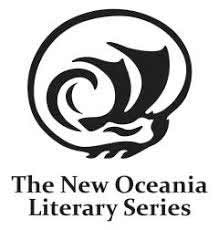 Editors Evelyn Flores and Emelihter Kihleng wisely cast their nets wide to gather voices representing all of Micronesia in this book, and they include seven maps. Flores and Kihleng sent out a call for submissions through the Pacific Arts Association, an international organization devoted to studying the arts of Oceania, with a 2009 deadline. That it took a decade to publish illustrates the complexity of pulling together many islands so far apart, with different languages and histories and cultures. The Preamble from the 1975 Constitution of the Federated States of Micronesia, included in the anthology, points out why that’s crucial: “To make one nation of many islands, we respect the diversity of our cultures. Our differences enrich us. The seas bring us together, they do not separate us.” Indeed, this very first assemblage of Micronesian literature is a shared storyline.
Editors Evelyn Flores and Emelihter Kihleng wisely cast their nets wide to gather voices representing all of Micronesia in this book, and they include seven maps. Flores and Kihleng sent out a call for submissions through the Pacific Arts Association, an international organization devoted to studying the arts of Oceania, with a 2009 deadline. That it took a decade to publish illustrates the complexity of pulling together many islands so far apart, with different languages and histories and cultures. The Preamble from the 1975 Constitution of the Federated States of Micronesia, included in the anthology, points out why that’s crucial: “To make one nation of many islands, we respect the diversity of our cultures. Our differences enrich us. The seas bring us together, they do not separate us.” Indeed, this very first assemblage of Micronesian literature is a shared storyline.
The seventy-one different contributors are on a mission—an intrepid search for their identities. Psychologist James Pennebaker of the University of Texas at Austin has established that writing can be emotionally healing, and each of these pieces certainly must have been for its author. When gathered together, however, such individual literary expressions go far beyond therapeutic search for self. In tandem, they transform into an allegory echoing timeless issues all across the globe.
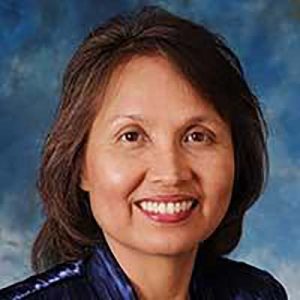
Image: Guam Visitors Bureau
These narratives record thoughts, fears, hopes, and dreams in many forms: “poetry, short stories, critical and creative essays, chants, and excerpts of plays.” The poems alone are reminiscent of similar themes in Pablo Neruda’s “Residencía en la Tierra,” “Cantos Ceremoniales,” and “Canto General” (particularly “I Recall the Sea”). The breadth of genres is impressive. There’s a play about a leper colony being moved, a poetic dance that decries the monetization of Pacific culture, a personal report about Nauru women picketing a plane, an entire essay like spoken word or rap written as a footnote likening Guåhan to “One Big American Footnote,” and a masterful island creation myth told in far fewer pages than it took James Michener in Hawaii.
Indigenous Literatures from Micronesia: Right there in the title, the editors demarcate their book’s undertaking by choosing “indigenous.” It means “belonging to a place,” another way to say “local.” One antonym is foreign, or “coming from outside.” That word indigenous clearly embodies the Micronesian dilemma. Spain, Germany, Japan, and the United States have all held these islands. The arrival of people from elsewhere to rule over those already present is certainly not a unique occurrence. It’s happened all over the world for centuries. UNESCO has brought to light the importance of indigenous peoples around the globe and the challenges they face.
What’s taken place in Micronesia, however, is unique. Former ancient trade routes developed these atolls into steppingstones across a broad ocean from one continent to another. The islands became a “site for militarism,” and were used as the fields of war. Experimental nuclear testing in the Marshalls after World War II vaporized several islands and left others radioactive and unlivable to this day. With increased dependence on imported food, the Marshalls have the highest rate of diabetes in the world. Nauru, Kiribati, and Guåhan are not far behind. Micronesian islands make another Top 10 list as well: They are at high risk if polar ice continues to melt. Several areas of the Marshalls are already covered. Belau, the Federated States of Micronesia (FSM), Nauru, and Fiji are being closely monitored. Because of its low altitude, Kiribati could be the first small island state to vanish.
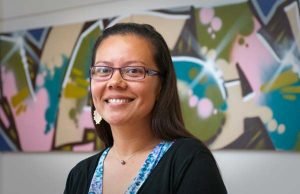
Photo by Pasifika@Vic
“ENOUGH!” cry the Micronesians in these literary offerings—in English as well as “nine of the thirteen basic language groups.” That’s timely, since 2019 is the United Nations International Year of Indigenous Languages, but by using a common language as well, they are able to build a barrier reef with one voice.
And that’s why the book is groundbreaking. For this time, the Micronesians themselves—the locals—are telling the story of Micronesia, not the foreigners. (Although one foreigner who has consistently and skillfully tried to tell the stories of these islands through his writing is P.F. Kluge, particularly in his 2012 novel The Master Blaster.)
In her Preface to Indigenous Literatures of Micronesia, Coeditor Flores of Guåhan writes about “the shocking realization that George Washington was not my forefather and I didn’t know who was.” Authors of these stories wring their hands at the detritus of war strewn on beaches, weep ecological tears for plastic and cans washed ashore, scratch their heads at the steady onslaught of televised images from the far side of the globe. They employ lyricism describing the Micronesian diaspora. They bring to light hidden issues such as discrimination against Micronesians in Hawai’i. They ask legitimate questions: Must the world be Americanized? We see women who fish lifted up as powerful role models. Here on these pages, the marginalized create artistic marginalia. The entire volume is a literary manifesto—a symbolic Belauan storyboard, Marshallese stick navigation chart, Pohnpeian urohs skirt, CHamoru creation myth, or Yapese rai stone.
Julian Aguon of Guåhan, in his 2009 law school commencement speech at the University of Hawai’i included in the book, makes the point: “…the part, no matter how pure its intention, cannot save the whole.” These Indigenous Literatures are far from being an Earthsea fantasy world imagined by Ursula K. Le Guin, yet they do bear metaphorical similarity to UKLG’s themes. Author David Mitchell, in a 2015 essay rereading UKLG’s novel A Wizard of Earthsea for The Guardian, noted her ending’s resemblance to “a process Jung called ‘individuation’, in which the warring parts of the psyche integrate into a wiser, stronger whole.”
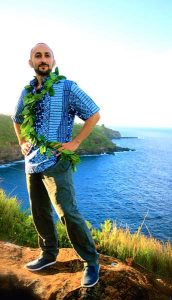
Photo by Joy Enomoto
That’s what appears to be happening in Indigenous Literatures from Micronesia. The editors ingeniously grouped these offerings into seven sections conveying forward motion: Origins, Resistance, Remembering, Identities, Voyages, Family, and A New Micronesia. As the anthology closes, one senses an impetus akin to that “wiser, stronger whole” Mitchell observed in Carl Jung’s individuation process. An eloquent Afterword by Series Editor Craig Santos Perez of Guåhan acknowledges today’s threats of “climate change, colonialism, militarism, and global capitalism” but stresses: “We continue to author a new Micronesia,” echoing Coeditor Kihleng of Pohnpei from her Preface: “…it is a beginning.”
Biographical information appears for contributors of the 120 pieces, some of which have been published previously. The majority (63) come from Guåhan (Guam); 14 from Belau (Palau); 8 each from Chuuk (Truk), Pohnpei (Ponape), and Kiribati (the Gilbert Islands); 5 each from Yap, the Marshalls, and Fiji; 4 from Nauru; and 2 from Kosrae (Kusaie or Strong’s Island). Yap, Pohnpei, Chuuk, and Kosrae together comprise the Federated States of Micronesia (FSM).
Several lovely touches enhance the volume. Flores and Kihleng “garlanded” the collection at the beginning with a poem by Teweiariki Teaero of Kiribati, a charming way to place figurative floral lei around the album. Introducing each section is the same blockprint fish by Monica Dolores Baza of Guåhan, who also created the book’s cover art in block mixed media portraying a palm tree weeping coconuts—with a trunk suggestive of the hands on Edvard Munch’s painting The Scream.
Why is this book important? Because Micronesia is a microcosm, a small-scale version of something larger, and its concerns transcend geography. They represent the macrocosm, the whole complex system of the world. In a literary sense, what these Pacific islanders seem to have done is study themselves in the manner of Robert H. MacArthur and E.O. Wilson’s theory of island (or insular) biogeography. The resilient residents of these small island states examine the experience of being colonized, marginalized, trivialized, vaporized, radiated, and swallowed by rising seawater.
“Use your words,” we remind those who are upset, and these authors did. They articulate in moving poetry and stirring prose. It’s easy to turn a blind eye to the other side of the world, to a broad sea of small islands, but this pioneering collection just might create a tsunami ripple effect. Indigenous Literatures of Micronesia is a testament to the power of the written word.
FULL DISCLOSURE: I harbor a fondness for Micronesia. One summer many many moons ago, I lived in the village of Ngaremlengui on the island of Babeldaob (Babelthuap) in Belau teaching English as a second language (TESL). Fifty years later, I’m still in touch with members of my host family. My brief immersion in the culture of that remote island completely altered my worldview. I learned far more than I taught. I’m still in awe of villagers who pulled discarded mimeograph pages out of office trashcans, boiling out the purple dye and coloring pandanus leaves to weave designs in sleeping mats. To those kind people of the atoll, I say in my shaky Palauan: “Alii! Bem tuu. Koangerang? Mechikung!” (“Hi! Welcome, come in. How are you? Thank you.”) Perhaps that’s all that ever needs to be said to anyone in any language anywhere.
Evelyn Flores (editor), born on Guåhan, is professor of English and Applied Linguistics at the University of Guam. She earned a PhD from the University of Michigan in Ann Arbor, a master’s degree from Andrews University in Berrien Springs (Michigan), and a bachelor’s degree from Walla Walla College in Washington state. Her published writing includes three children’s books known as The Island Cousins series, as well as poems in various journals.
Emelihter Kihleng (editor) is the first curatorial fellow from the Pacific working with the Oceania collections at the MARKK, Museum am Rothenbaum, in Hamburg, Germany. Originally from Pohnpei, she was Fall 2015 distinguished writer in residence in the English Department at the University of Hawai’i at Mānoa, where she earned master’s and bachelor’s degrees in English. Her PhD in Pacific Studies is from Victoria University of Wellington in Aotearoa (New Zealand). Kihleng’s poetry collection, My Urohs, came out in 2008.
Craig Santos Perez (series editor) is associate professor of English at the University of Hawai’i at Mānoa, where he is also affiliate faculty at the Center for Pacific Islands Studies and the Indigenous Politics Program in the Department of Political Science. A CHamoru writer from Guåhan, he cofounded Ala Press, an indie publisher of indigenous Pacific Islander literature, with Brandy Nālani McDougall in 2011. Perez won a 2015 American Book Award from the Before Columbus Foundation (the first Pacific Islander to do so) for his poetry book from unincorporated territory [guma’]. Another book in the series, from unincorporated territory [saina], won the 2011 PEN Center USA Award for Poetry. Perez earned a BA in Art History and Literature from the University of Redlands, an MFA in Poetry from the University of San Francisco, and an MA and a PhD in Comparative Ethnic Studies from the University of California, Berkeley. He coedited two anthologies: Chamoru Childhood (with Michael Lujan Bevacqua and Victoria-Lola Leon Gurrerro) and Home Islands (with Brandy Nālani McDougall).
Publisher: University of Hawai’i Press
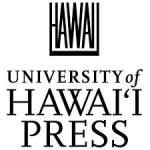 The University of Hawai’i Press (UHP) in Honolulu, which began in 1947 as a regional press, is a member of the Association of American Publishers and the Association of University Presses. UHP has over three thousand titles in print, with about seventy new titles each year plus forty new journal issues. Approximately a dozen faculty members of the University of Hawai’i at Mānoa comprise the UHP Editorial Board. In support of the university’s goals, the press focuses primarily on Asian, Pacific, Hawaiian, Asian American, and global studies.
The University of Hawai’i Press (UHP) in Honolulu, which began in 1947 as a regional press, is a member of the Association of American Publishers and the Association of University Presses. UHP has over three thousand titles in print, with about seventy new titles each year plus forty new journal issues. Approximately a dozen faculty members of the University of Hawai’i at Mānoa comprise the UHP Editorial Board. In support of the university’s goals, the press focuses primarily on Asian, Pacific, Hawaiian, Asian American, and global studies.
Author Guidelines for submitting a query, proposal, or manuscript are posted on the website.
Copyright 2019 Woven Tale Press LLC. All Rights Reserved

